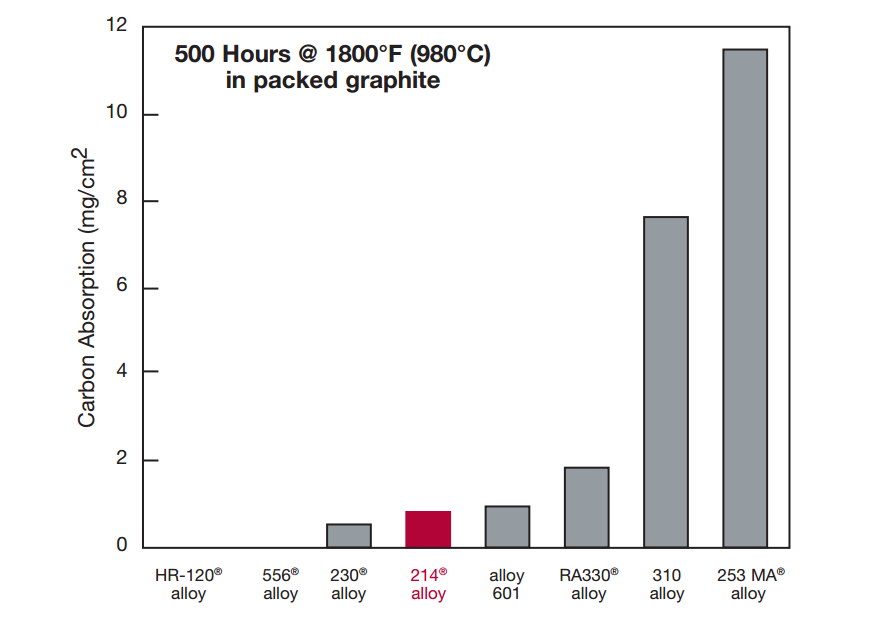HAYNES® 214® alloy has very good resistance to carburization, as measured in both packed graphite exposure tests and mixed gas exposure tests. Results for these tests are presented in the following pages. All results are presented in terms of the mass of carbon absorption per unit area, which was obtained from the equation M = C(W/A) where M = the mass of carbon absorption per unit area (mg/cm2). C = difference in carbon (weight fraction) before and after exposure, W = weight of the unexposed specimen (mg) and A = surface area of the specimen exposed to the test environment (cm2).
Packed Carburization Resistance
Carbon absorption observed for 214® alloy following 500 hour exposure in packed graphite at 1800°F (980°C) was very low, as shown below. While superior resistance was exhibited by HAYNES HR-120® and 556® alloys, other alloys tested exhibited significantly greater carbon absorption. In particular, the resistance to carburization of 214® alloy was far better than that for the stainless steel type materials.
